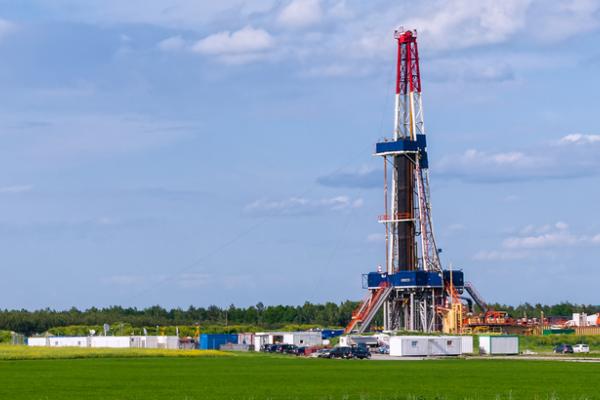The project is one of four which have been allocated up to EUR 12 million funding under the EU’s first call for research proposals surrounding shale gas under Horizon 2020, its EUR 77 billion research funding programme.Europe remains divided over shale gas, with countries such as Poland and the UK gearing up to start production, while France and the Netherlands have issued moratoriums on shale gas development.‘Member States must be in a position to make informed and responsible choices,’ said Robert-Jan Smits, Director-General of the European Commission’s Directorate General for Research and Innovation, duringShale gas in a Low Carbon Europe: the role of Research, an event in Brussels on 23 February which brought together shale gas researchers and policymakers from Europe, the US and Canada.‘It is here that science and innovation play a crucial role.’The main controversy surrounds fracking, the technique used to recover shale gas where water and chemicals are pumped into shale beds 3 kilometres underground at high pressure in order to split the rock close to the extraction site and release deposits of natural gas.In the US, where shale has become the main source of gas, extraction has raised concerns aboutwater contaminationat a small minority of sites, and the reinjection of waste water could be linked toseismic activity.“‘There are a lot of fundamental questions that are open and they need to be addressed.’Dr Alberto Striolo, coordinator of ShaleXenvironmenT’We’re happy to share what we’ve learned, what we’ve done right, and what we might have done differently,’Dr Michael Knotek, Deputy Under Secretary for Science and Energy, US Department of Energy, told the meeting. ‘We encourage our European partners to keep their options open for shale gas development.’EU-funded researchers have teamed up with counterparts from the US and Canada for all four of the new research projects. That includes ShaleXenvironmenT, which is aiming to examine shale rocks at the nanometre scale, in order to understand exactly how the gas is stored within them.‘There are a lot of fundamental questions that are open and they need to be addressed, that is what is attractive about this,’said coordinator Dr Alberto Striolo, from University College London.Two oceansThe shale samples used by the project are removed by energy firm Halliburton and the researchers will work out how to examine them in a particle accelerator while maintaining them at a pressure of around one kilobar, which represents the pressure 10 kilometres under water – more than twice the average depth of oceans on earth.To recover shale gas, water and chemicals are pumped into underground shale beds at high pressure in order to split the rock and release deposits of natural gas. Shutterstock/ DesignuaTo recover shale gas, water and chemicals are pumped into underground shale beds at high pressure in order to split the rock and release deposits of natural gas. Shutterstock/ Designua‘There is some fundamental science about shale gas that for geology could be as exciting as dark matter in outer space for astrobiologists and space scientists,’ said Dr Adrian Jones, who also works on the project at University College London.If it is successful and proves to be safe, shale gas could provide cheaper energy to European firms, helping them to compete with counterparts from around the world, and help ease reliance on energy sources that emit more greenhouse gases, such as coal.However, it all comes down to whether research is able to identify the level of risk, so that operators and officials can decide whether a shale gas extraction site will be safe, and give an early warning of what might go wrong.A good way to do this is through computer modelling, validated by appropriate experiments.‘We can’t absolutely quantify what’s going on in the subsurface, we don’t know, we’re not there,’ said Dr Chris McDermott, the coordinator of FracRisk, one of the other projects funded by the EU which is developing a way to evaluate risk.‘We’re trying to improve the predictive modelling capabilities,’said Dr McDermott, who is based at the University of Edinburgh.‘This then allows us to identify important areas which need better control and areas which will be safe.’Reference pointOne of the most important ways to test whether shale gas has impacted the environment is to do so-called baseline testing to work out the exact methane levels in the water and air before shale gas operations begin.‘Then at least you have a reference and you can define changes caused by shale gas development,’ said Dr René Peters from TNO in the Netherlands, coordinator of the European Energy Research Alliance’s joint programme on shale gas, which integrates research across the EU. ‘That would be our advice and approach.’Last year, the EU issued recommendations to countries that want to extract shale gas, which included baseline reporting. It plans to wait and see whether these recommendations are working, before deciding whether to propose full regulations.
This article was originally published in Horizon, the EU Research and Innovation magazine.
Add to favorites:
Share:
Listing Description
Video
Documents
No documents available.
Ask KETMarket to make a contact
Connect with the Listing Owner!
💬 Please log in now to askKETMarket to make a contact. Not a member yet? Sign up for free and start connecting today!
Video
Related Funding and Finance Opportunities
Unlock Exclusive Funding Opportunities!
🔑 Get instant access to tailored funding opportunities that perfectly match your needs. This powerful feature is exclusively available to our premium members—helping you save time, stay ahead of the competition, and secure the right funding faster.
Upgrade to Premium now and never miss an important opportunity again! Already a premium member? Log in here to explore your matches.
Related Innovation Offers
Discover Tailored Innovation Offers!
🚀 Gain access to technology solutions that match your specific needs and interests—carefully selected to support your innovation goals. These offers are exclusively available to our premium members, helping you identify relevant technologies faster and start the right conversations with potential partners.
Upgrade to Premium now and explore your personalized technology matches today! Already a premium member? Log in here to view your tailored offers.
Related Knowledgeable Resources
Discover More with Premium: Related Knowledge Resources
🔒 You’re missing out on expert-curated knowledge specifically matched to this topic. As a Premium member, you gain exclusive access to in-depth articles, guides, and insights that help you make smarter decisions, faster.
Whether you’re preparing a funding proposal, researching a new market, or just need reliable information—our Premium knowledge matches save you hours of research and point you directly to what matters.
Upgrade to Premium now and instantly unlock relevant knowledge tailored to your needs! Already a member? Log in here to view your personalized content.

